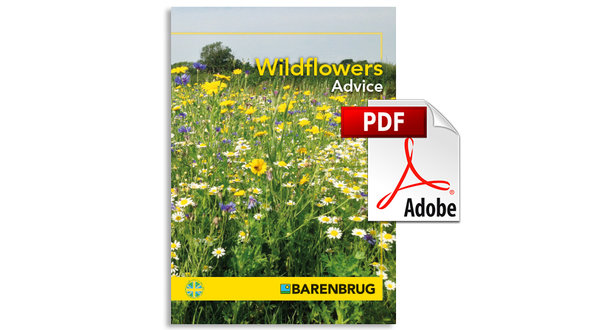In bloom at Willingdon Golf Club
New wildflower seed ensures Eastbourne golf club is blossoming.

New wildflower seed ensures Eastbourne golf club is blossoming.
Willingdon Golf Club course manager Luke Turner isn’t just trying to create the perfect greens for members, he’s also hoping to attract a much wilder set of visitors to the 18-hole course.
Set among the protected grassy downlands on the edge of the South Downs in Eastbourne, the 120-year-old course, recently listed as one of the top courses in Sussex, is a haven for birds and reptiles – and, more recently, wild flowers.
This year, as well as hand crafting bird boxes and reptile homes, Luke and his deputy James Wilkinson have turned an area of rough into a wildflower meadow that’s attracting more than 25 species of butterfly.
“Greenkeepers and golf courses can sometimes be portrayed as environmentally unaware: that we are not concerned with the environment around us and ecology of our sites” says Luke, who has been working as a greenkeeper at Willingdon for eight years. “But we definitely don’t see it like that here.”
Wild at heart
When an elderly member of the golf club passed away last year, Luke and James were approached by the family to create a memorial for them. They hit upon the idea of a wildflower meadow.
“I'd used Barenbrug’s Cornfield Annual wildflower mix at a previous course and it was very effective, with very reliable germination, so I knew this would perform well,” says James, who joined Willingdon in February. “It’s a very versatile mix and seems to cope well, wherever you use it.”
After selecting a specific site on the course in early spring, James and Luke broadcast the seed thickly using sand as a carrier. They sewed seed in multiple directions to ensure good coverage and lightly raked it over. By mid-May there was complete coverage with an inch of lush green growth, and at the beginning of July the first flowers began to emerge.
As a 100% annual mixture, with five of the most popular native flowers included: cornflower, poppy, corn marigold, corn chamomile and corncockle, Barenbrug’s mix is designed to give a big hit of colour. And that’s just what it did.
“Over one weekend the whole area had transformed into a stunning carpet of colour,” says Luke. “It was alive with butterflies and bees and it could be seen from two or three of our tees so it had a stunning visual impact for members. The end results were like something out of a brochure.”
Rare gem
Thanks in part to the mix’s endurance – it stayed colourful throughout July, August and into September – the new wildflower patch attracted a record number of bees and butterflies at the course, including rare species such as Adonis Blue and Dingy Skipper.
It’s something that might have made Willingdon course designer Dr Alister MacKenzie proud. In 1925, he redesigned the course to make more of its natural features and had a strong conviction that golf was good for health.
“We are trying to take the course back to its download grassy routes, and make the site more ecologically varied,” says Luke. “The golfing and greenkeeping industry has changed massively in the last 4-5 years and an increasing number of golf clubs are now pushing their commitment to ecology and making course management more sustainable. We actively promote and encourage that approach here.”
Proudly working with our distributor, Collier Turf Care.

For more information on Wildflowers, order our brochure.

A 100% annual mixture designed to give a big hit of colour. Contains the five most popular UK native annual wildflower species. Can be added to other mixtures to provide impact in the first year.